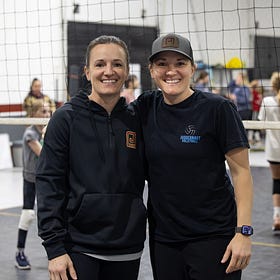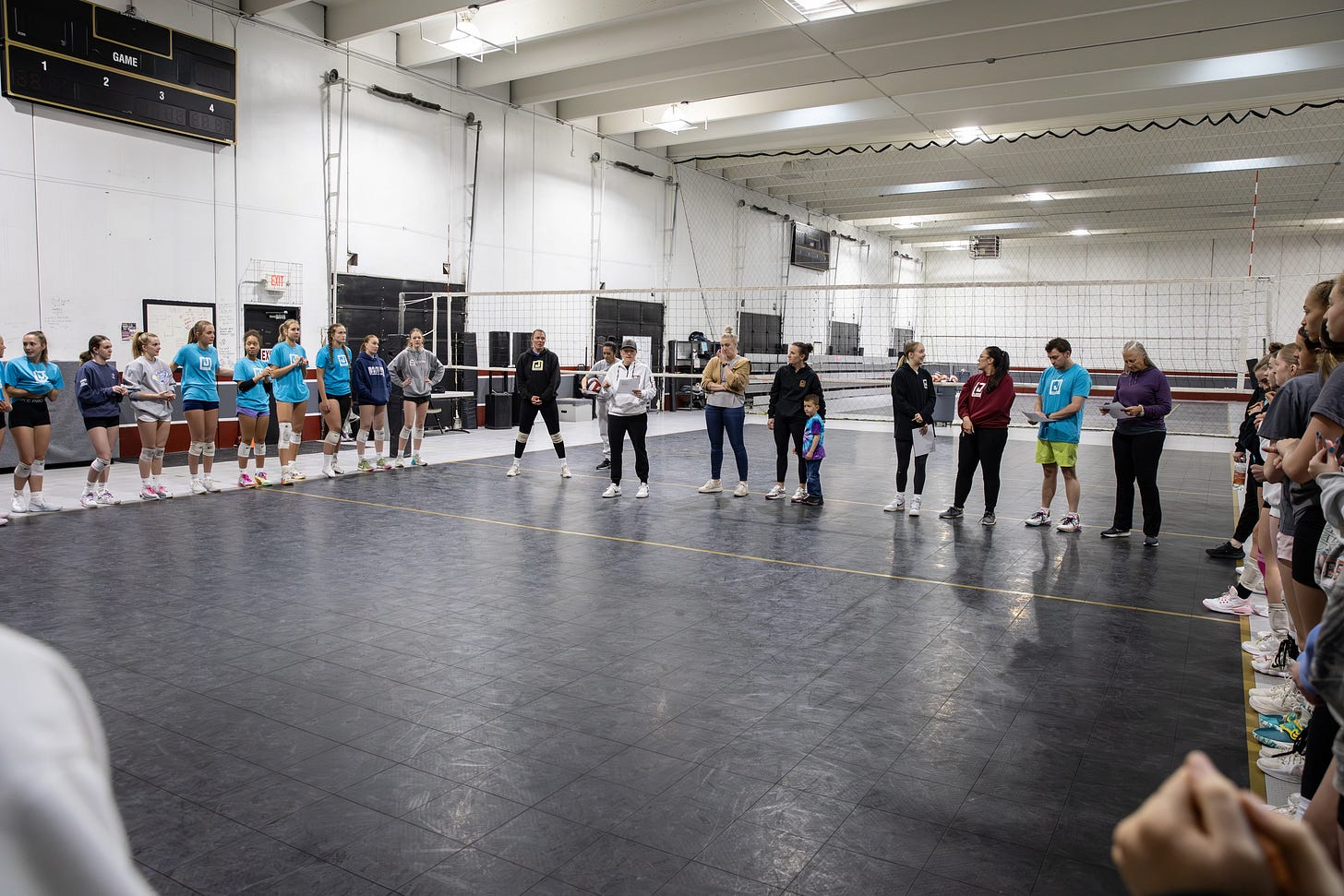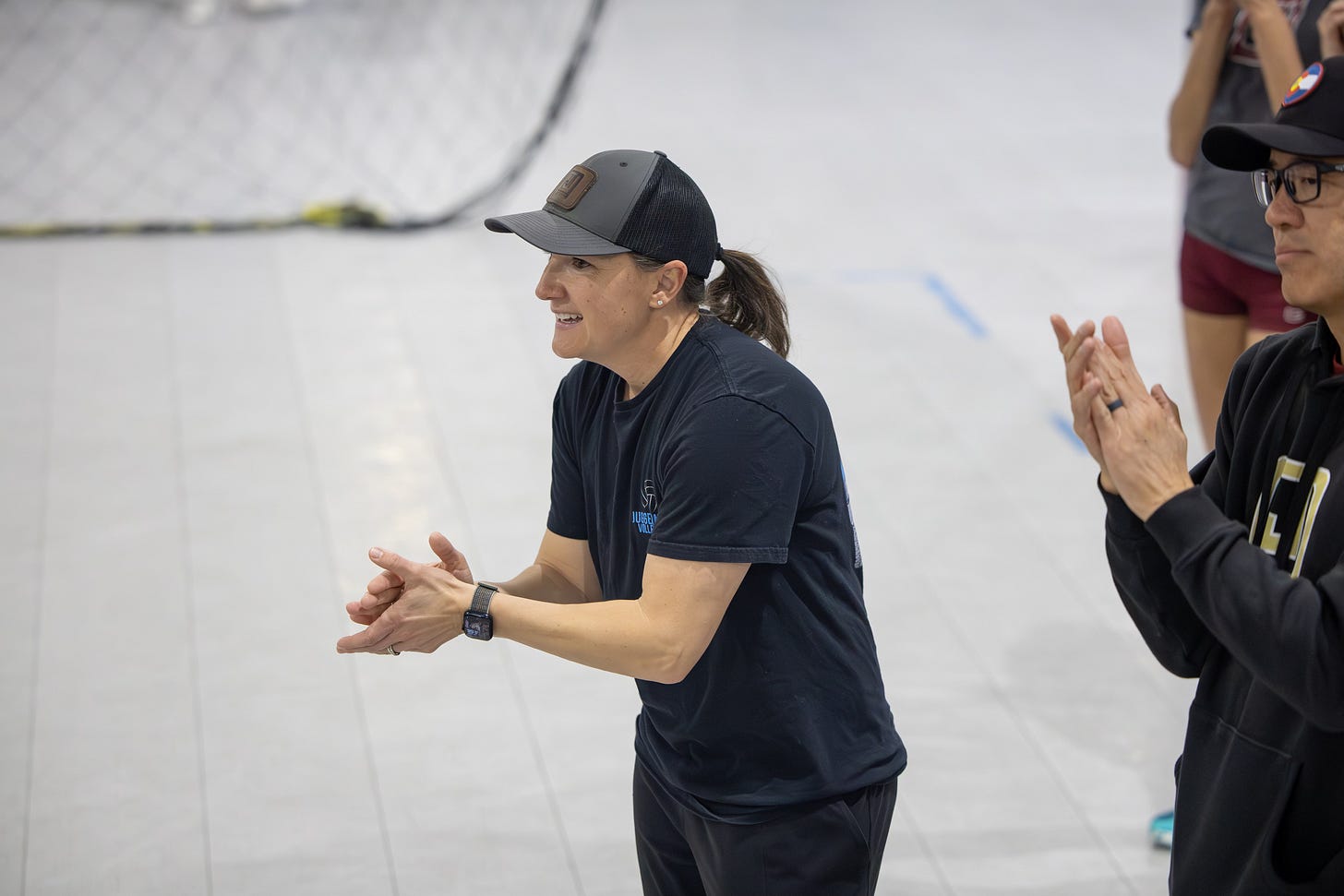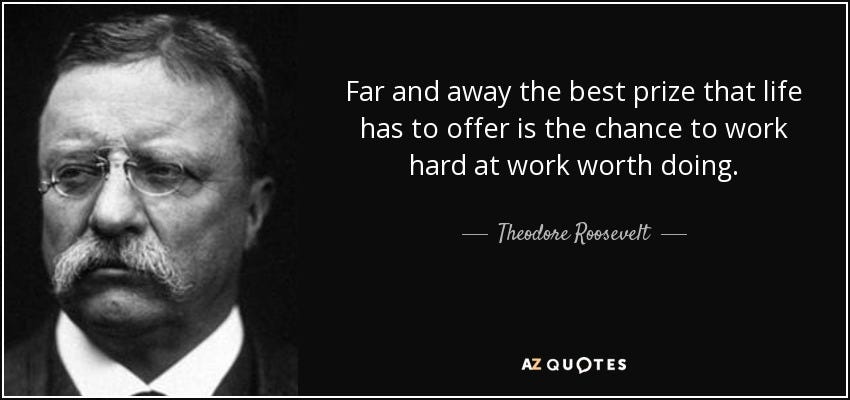Leading a Collaborative Club (part 2)
with Jess Sponenberg and Tarah Olmstead
This is part 2 of this post. You can read part 1 by clicking this link:
Leading a Collaborative Club (part 1)
Jess Sponenberg and Tarah Olmstead are twin sisters who run a youth volleyball club together. That club, Juggernaut, has been around since 2005. While the two weren’t in the same leadership positions they are today, they were part of the group that started the club. They built the club, both literally and figuratively, and are now co-owners and co-direc…
The club begins each year with a coaches’ retreat. The sisters rent a big house in the mountains and create a weekend in which the coaches work with them and with each other. They, as Jess summed up, “nerd out on volleyball” and on their plans for the season. Their retreat sets the standard that each coach will be in regular contact with Jess and/or Tarah as the season unfolds. There are some practical aspects to the constant communication and collaboration they engage in. The club regularly has more teams practicing than it has courts available so sometimes the collaboration is necessary just to coordinate how teams will use the court space available during any given practice session. Tarah, Jess, or other coaches will occasionally cover a practice when another coach cannot attend and their collaborative habits make covering these practices much more seamless than might be expected. As Tarah put it, “if we have a village, let’s use the village!” But the true collaborative work the sisters put in is far from just in scheduling.
To really collaborate with the coaches, Tarah and Jess frequently ask sincere questions of the coaches in the club, questions meant to further their understanding of the coaches. Perhaps the main question Jess uses with them is, “what do you need?” Sometimes, that question is used in the context of if a coach wants a court to themselves on a given practice night. Other times, the question is meant to help Jess plan parts of practice that will be specifically tailored to what a particular coach thinks is necessary for a team to work on. But, depending on the coach, the answer might not be Jess creating a whole practice, but instead creating space the coach can fill for themselves or with feedback from Jess. For her, collaboration requires getting as much insight as she can from the coaches, rather than filling all the space herself.
Jess uses “what do you need?” for more than just scheduling and planning. It can also be another way of asking, “what do you see?” Her conversations with coaches about their needs include getting into what coaches think teams need to work on as well as what they see that leads them to those conclusions. These conversations help with planning but they also help Jess develop a sense of how coaches view the game and the players. It’s important to her to learn about how coaches are teaching and learning. She says “it’s fun to see them inspire in different ways.”
Another question Jess loves to ask coaches is, “what are your staple drills?” She’s interested in which activities the coaches like doing with their teams and why. Not only do their answers help her plan practices that coaches and players are engaged in, but their answers also give her insight into what the coaches see and value. She can use the activities the coaches feel comfortable with to stretch them as well. She’ll regularly ask coaches to shift their focus within an activity they know to see if the coaches can get more out of the activity, the players, and themselves. She’ll also give coaches different activities to work on some of the same aspects of the game so less-experienced coaches can learn the value of variety in their practices.
Both Tarah and Jess spend time interacting with coaches in the gym as well. Most practices have a section which begins with a demonstration and continues with all teams doing roughly the same activity for a while. During this time, Jess and Tarah can observe the coaches as well as work with them. They can couple their observations with the conversations they have with the coaches. Jess talked about how she wants to learn which coaches understand their role within a given activity and which ones try to take the role that they’re comfortable with or that they understand. The sisters are looking for signs that coaches understand how to adapt themselves as situations require, or for signs that coaches are resistant to change. For them, these observations and conversations help them tailor not only their practice plans but their relationships with the coaches. By regularly interacting, the two can offer better suggestions to the coaches about how to get the most out of their practices and out of the players.
And their collaboration doesn’t end in the practice gym. Tarah and Jess normalize their presence in two ways, by making regular appearances during practice but also by making regular appearances during competition. I saw this in action recently when I watched Tarah coach her own team in the morning wave of a multi-day tournament and then sit on the bench of another team for part of the afternoon wave. This is a common practice in the club and both sisters commented to me about how important it is for the coaches and players to feel comfortable with their presence on the bench during play.
Being present during competition allows the sisters to make observations about what the coaches and players are doing, which makes for better conversations in the future. Coaches don’t have to explain everything that happened at a tournament to Jess and Tarah, they can refer to what they all saw together during play.
Being present during play also gives the sisters chances to carry some of the load for the coaches. When I was watching Tarah during the afternoon wave, the opponent had an issue with their lineup that required some time and explaining. Tarah went to the official and discussed what was happening administratively, which allowed the coach of the team she was with to spend all that time with the team instead of with the official. She freed the coach up to focus on what mattered while she absorbed what could have been a massive distraction.
I am so impressed with how Jess and Tarah have worked to manage what I see as one of the main problems with youth sports, the part-time nature of the coaches. I have often said that, for most youth sports coaches, coaching is, at best, their second job. The time they have available to commit to coaching is limited so they are rarely able to create the experiences they’d like for the players they work with. By collaborating so much with the coaches, they learn which ones have more bandwidth available and which ones need more done for them before they get to practice. They also learn which coaches want to engage more in the art and science of coaching, regardless of the time they have available to be in the gym. This helps the sisters create a more consistent experience across the club for players, families, and coaches. All players can see that their development and wellbeing are being cared for by the whole club and not just one coach who may be overwhelmed.
When I talk with Tarah and Jess and watch them work, I am struck by the passion, focus, and joy they display and communicate to others. It is so clear how deeply connected they are to the community they have in their club. Their connection isn’t built on competitive or financial results, it’s built on the people they collaborate with. When they started at Juggernaut, they were most passionate about how things functioned, which led to their control freak days. Today, they are most passionate about how it feels to be part of the club. For Tarah, the sense of community is paramount. For Jess, the feelings of accomplishment that result from hard work are most important. They both have found that they feel most fulfilled when they are doing work with others. Jess summed up their feelings by quoting Theodore Roosevelt during our conversation.
If you have questions or comments you can email me or you can email Jess or Tarah directly.






